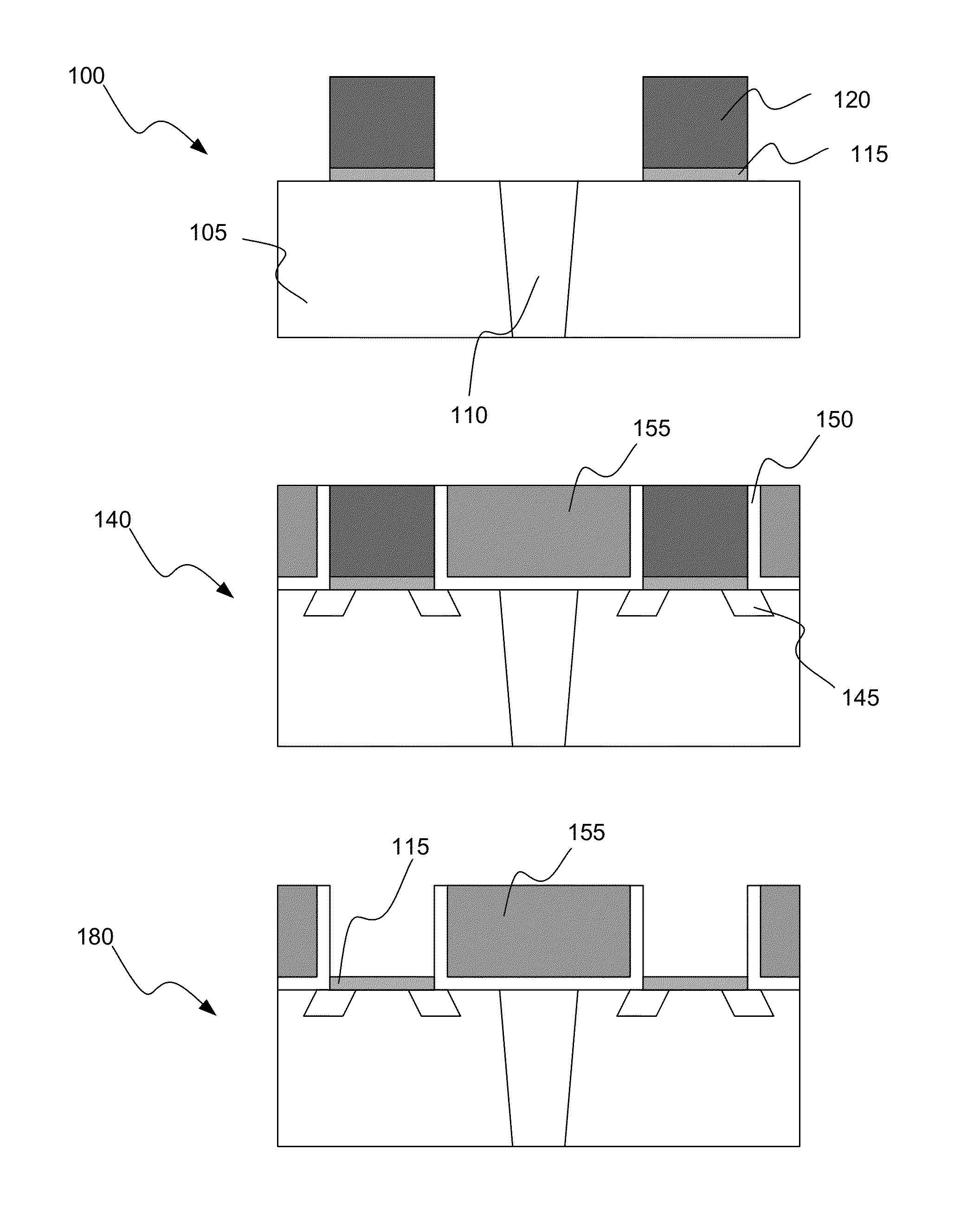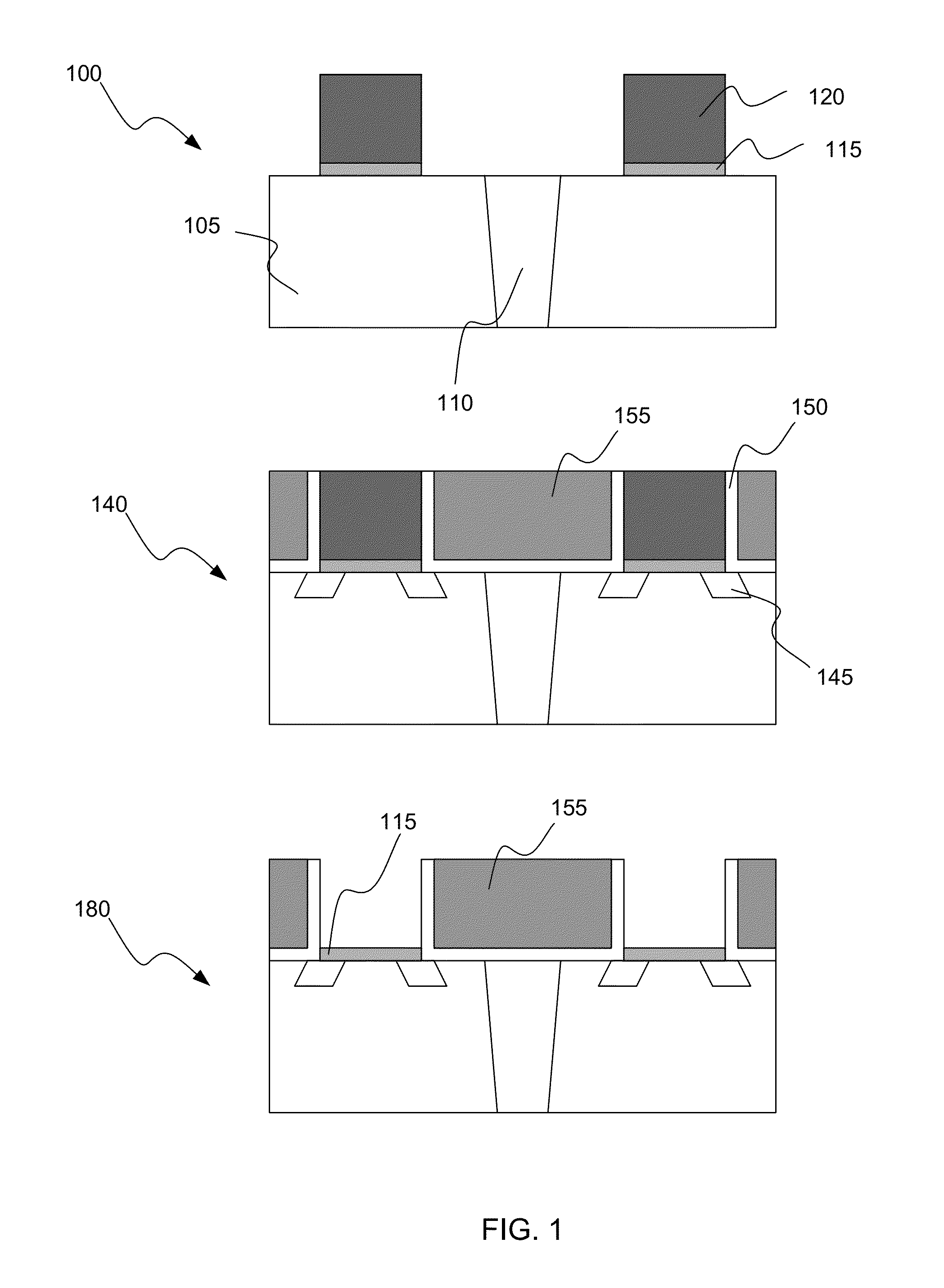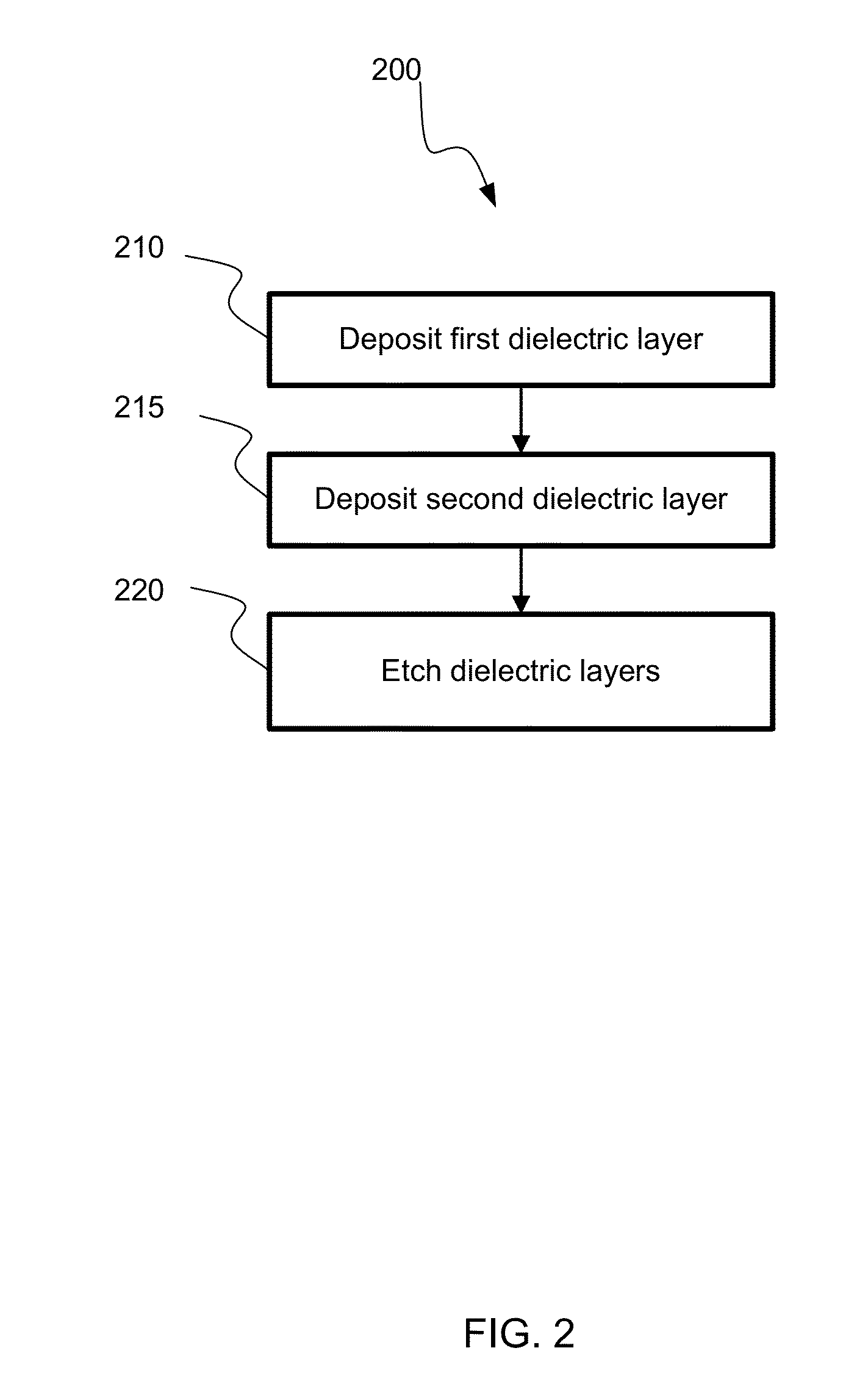Insensitive dry removal process for semiconductor integration
a technology of semiconductor integration and dry removal process, which is applied in the direction of semiconductor devices, electrical equipment, basic electric elements, etc., can solve the problems of destroying the substrate, requiring delicate and controlled etching techniques, and removing too much non-sacrificial material
- Summary
- Abstract
- Description
- Claims
- Application Information
AI Technical Summary
Benefits of technology
Problems solved by technology
Method used
Image
Examples
examples
[0046]Comparative examples were made between etch selectivity using a dry etchant gas mixture. The etches were conducted on substrates containing oxides deposited by HDP CVD as well as a flowable CVD. The flowable oxide was cured with an anneal at 400° C. prior to etching. The oxides were exposed to a dry etchant gas mixture containing nitrogen trifluoride and ammonia for a period of thirteen seconds. As can be seen in Table I below, the dry etchant gas mixture removes only slightly more of the flowable oxide as compared to the HDP quality oxide, which indicates that the dry etchant gas is substantially insensitive to oxide quality:
TABLE IETCH DEPTH OF DRY ETCHANT GASEtch DepthSelectivity with(angstrom)respect to HDP oxideHDP Oxide1321.0000Flowable Oxide1331.0076
[0047]FIG. 5A is an SEM image showing etch depth in trenches and open fields using an aqueous HF etchant. The HF is sensitive to oxide quality, and thus differences in oxide quality are reflected in different etch depths. Op...
PUM
 Login to View More
Login to View More Abstract
Description
Claims
Application Information
 Login to View More
Login to View More - R&D
- Intellectual Property
- Life Sciences
- Materials
- Tech Scout
- Unparalleled Data Quality
- Higher Quality Content
- 60% Fewer Hallucinations
Browse by: Latest US Patents, China's latest patents, Technical Efficacy Thesaurus, Application Domain, Technology Topic, Popular Technical Reports.
© 2025 PatSnap. All rights reserved.Legal|Privacy policy|Modern Slavery Act Transparency Statement|Sitemap|About US| Contact US: help@patsnap.com



